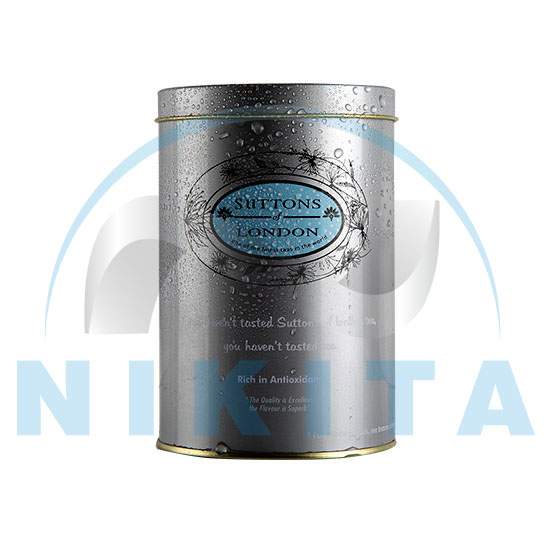
Consumer preferences are shifting as people become more aware of sustainability, food safety, and packaging quality. Among the many options available, metal food packaging containers have gained significant popularity over plastic and glass. With benefits such as superior food preservation, durability, and recyclability, metal packaging is becoming the preferred choice for environmentally conscious consumers. This blog explores the reasons behind this growing trend and why more people are choosing metal food packaging containers over other materials.
Changing Consumer Preferences in Food Packaging
Consumers are increasingly looking for packaging that meets the following criteria:
- Eco-Friendly and Sustainable – A growing number of consumers prefer packaging that minimizes environmental impact.
- Safe for Food Storage – People want assurance that their food is stored in non-toxic, chemical-free containers.
- Durable and Reliable – Packaging must be strong enough to prevent leaks, spills, and breakage.
- Aesthetic and Functional – High-quality packaging enhances the overall experience of using a product.
Metal food packaging containers excel in all these areas, making them an attractive choice for consumers.
Key Reasons Why Consumers Prefer Metal Food Packaging Containers
1. Superior Food Preservation and Freshness
One of the biggest concerns for consumers is keeping food fresh for longer. Metal food packaging containers provide an airtight seal that protects food from exposure to oxygen, moisture, and contaminants. This extends shelf life and reduces food waste, making metal packaging a smart choice for people who want their food to stay fresh for extended periods.
2. Sustainability and Environmental Responsibility
Consumers are becoming more environmentally conscious and prefer packaging that aligns with their values. Metal food packaging containers are:
- 100% Recyclable – Unlike plastic, which degrades with recycling, metal can be recycled indefinitely without losing quality.
- Less Harmful to the Environment – Metal does not contribute to microplastic pollution, a major concern with plastic packaging.
- Encouraging Circular Economy – Recycling metal requires less energy than producing new materials, reducing carbon footprints.
With sustainability at the forefront of purchasing decisions, metal food packaging containers are a clear winner for eco-conscious shoppers.
3. Health and Safety Considerations
Consumers are increasingly aware of the potential health risks associated with plastic packaging. Many plastic containers contain harmful chemicals like BPA, which can leach into food and beverages over time. Metal food packaging containers, on the other hand, offer a non-toxic, chemically stable solution that ensures food safety.
4. Durability and Strength
Unlike glass, which is fragile and prone to breakage, or plastic, which can warp or crack, metal food packaging containers are highly durable. Consumers appreciate packaging that:
- Can withstand transportation and handling without breaking
- Protects food from physical damage
- Is reusable and long-lasting
The strength of metal containers ensures that food remains secure, reducing the chances of spills and leaks.
5. Better Temperature Regulation
Metal food packaging containers are known for their superior thermal properties. Whether storing frozen foods or heat-treated meals, metal containers help maintain consistent temperatures better than plastic or glass. This makes them ideal for:
- Preserving frozen and perishable foods
- Canning and sterilization processes
- Long-term food storage without spoilage
This added functionality makes metal a preferred choice for people who prioritize food safety.
6. Aesthetic Appeal and Premium Look
Consumers are drawn to products that have an attractive presentation. Metal food packaging containers give food products a premium, high-quality appearance that plastic and glass often lack. This aesthetic appeal enhances customer satisfaction and reinforces the perception of superior quality.
7. Lightweight and Convenient
Compared to glass, which is heavy and cumbersome, metal food packaging containers offer a lightweight yet strong alternative. Consumers find metal packaging easier to handle, transport, and store, making it a practical choice for everyday use.
How Metal Food Packaging Containers Compare to Plastic and Glass
| Feature | Plastic Packaging | Glass Packaging | Metal Food Packaging Containers |
|---|---|---|---|
| Recyclability | ❌ Limited and degrades | ✅ Recyclable but energy-intensive | ✅ 100% Recyclable and reusable |
| Food Freshness | ❌ Permeable to air and moisture | ✅ Airtight but fragile | ✅ Airtight and moisture-resistant |
| Chemical Safety | ❌ May leach toxins (BPA) | ✅ Non-toxic | ✅ Completely safe |
| Durability | ❌ Prone to damage | ❌ Fragile and heavy | ✅ Strong and impact-resistant |
| Sustainability | ❌ High environmental impact | ❌ Energy-intensive production | ✅ Eco-friendly and sustainable |
| Aesthetic Appeal | ❌ Cheap appearance | ✅ Premium but breakable | ✅ Sleek and premium look |
The Growing Demand for Sustainable Packaging
Several studies indicate that consumers are actively seeking sustainable packaging options. Brands that use metal food packaging containers not only cater to these preferences but also position themselves as responsible and forward-thinking. Businesses that prioritize eco-friendly packaging attract more customers, build brand loyalty, and gain a competitive advantage in the market.
Conclusion
The shift towards sustainable, durable, and health-conscious packaging has made metal food packaging containers the preferred choice for many consumers. With their ability to preserve food freshness, reduce environmental impact, and provide a safe storage solution, metal containers are proving to be a superior alternative to plastic and glass. As awareness grows, more consumers will continue to choose metal packaging, making it a key player in the future of sustainable food storage.





Leave a Reply